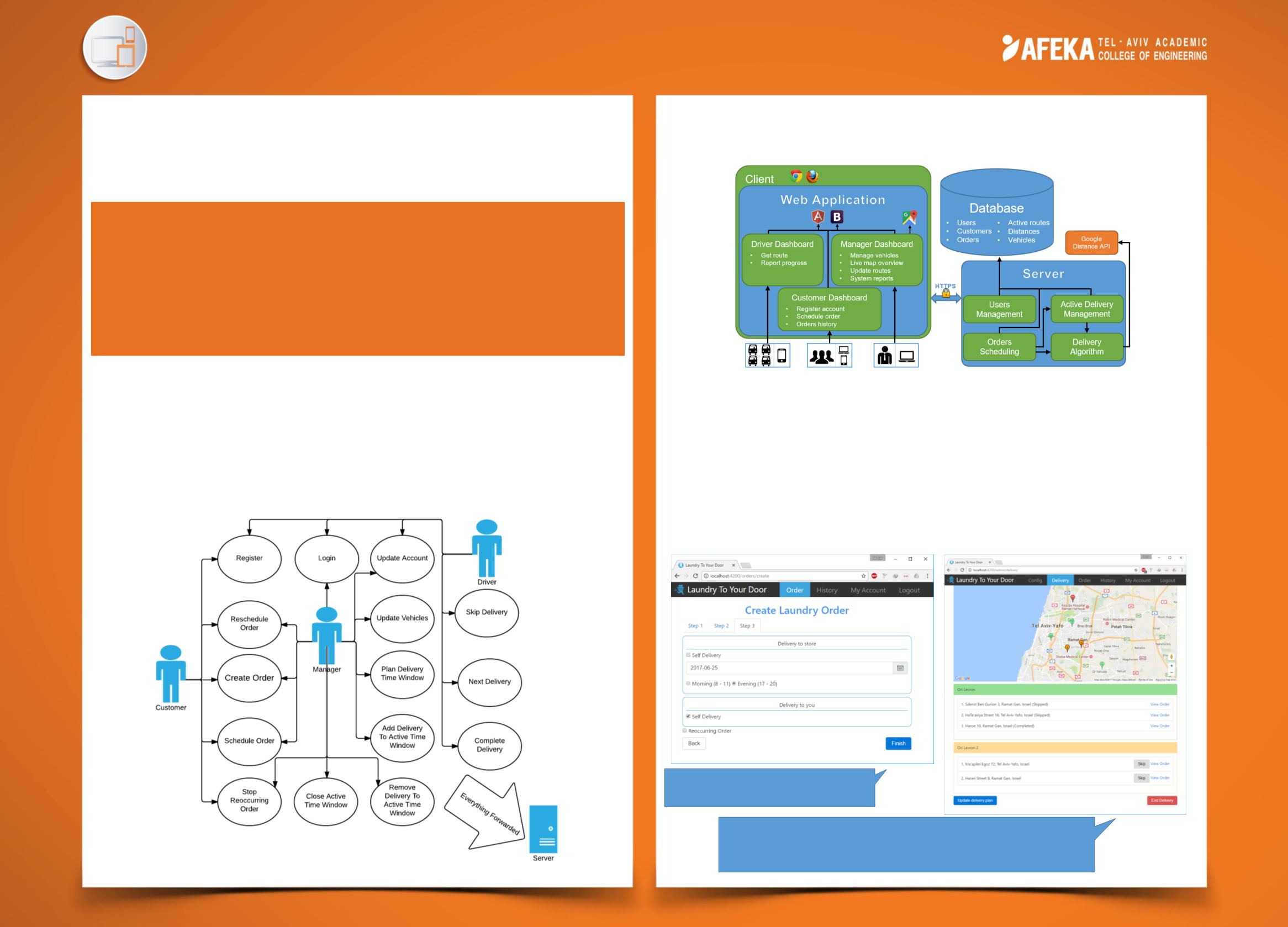

Laundry To Your Door
Main Requirements:
• Delivery planning under vehicles number, capacity and time window
constraints.
• Prioritizing scheduled orders. Allow new orders only when time window
isn’t fully booked.
• Ability to modify delivery routes in an ongoing time window.
• Ability to view ongoing delivery routes and progress on a map.
• Allowing one-time or recurring orders.
Ori Levron
Advisor: Dr. Eli Weintraub
Software Engineering
The system is divided into two parts. The client side which is a single page web
application and the server side which is a Web API that contains the business logic
and is a gateway to the database.
On the client side there are 3 dashboard. The customer dashboard allows all order
management operations. The manager’s dashboard will provide full overview and
control over active deliveries and orders. Driver’s dashboard for accessing and
reporting progress on his delivery route.
On the server side there are 4 main modules. User management for authentication
and authorization of user actions. Order scheduling is responsible to assign deliveries
to available time windows. Active delivery management for planning and modifying the
state of the active deliveries. Delivery algorithm responsible to find an optimal delivery
route, based on distances and travelling times received from google distance
services. All the modules use the database to persist and retrieve relevant data.
Many laundry businesses today rely on manual and
inefficient operations. A laundry logistics platform is
proposed, where laundry orders are easily
scheduled, and delivery is dynamically planned and
overviewed. It ensures that no delivery gets
overbooked and plans the routes at minimum cost.
Manager accessing the delivery plan. The locations are
available on the map as well as the delivery progress. The
locations may be dragged and dropped to change the order.
A customer scheduling a new
order on the system.
















